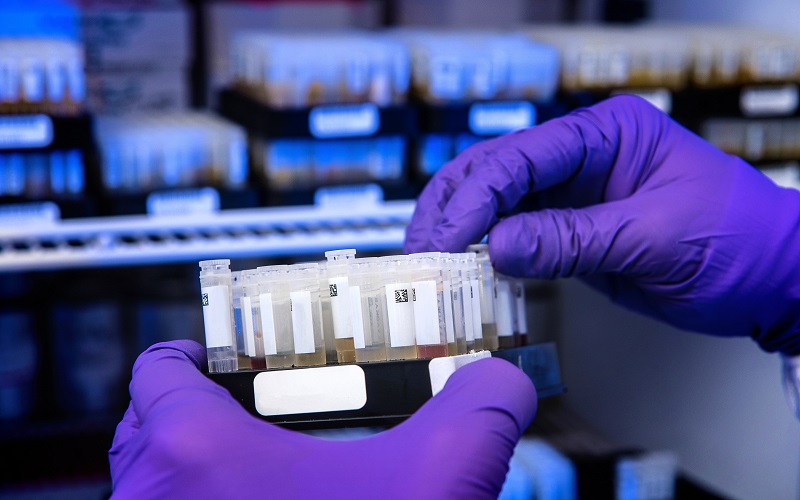Introduction
Glycans, also known as carbohydrates, are complex molecules that play a crucial role in various biological processes. They are involved in cell signaling, immune responses, and cell adhesion, among other functions. Glycan arrays have emerged as powerful tools for studying the interactions between glycans and other molecules. In this blog post, we will delve into the world of glycan arrays, exploring what they are, their applications, recent research advances, and the future challenges they present.
What is a Glycan Array?
A glycan array is a high-throughput screening platform that allows researchers to study the interactions between glycans and other molecules, such as proteins, antibodies, and viruses. It consists of a solid support, such as a glass slide or a microarray chip, onto which a library of different glycans is immobilized. The glycans are arranged in a spatially defined manner, enabling the simultaneous screening of multiple interactions.
Applications of Glycan Arrays
Glycan arrays have found numerous applications in various fields of research, including glycobiology, immunology, and drug discovery. Here are some key areas where glycan arrays have made significant contributions:
Glycan-Protein Interactions: Glycan arrays allow researchers to study the specific interactions between glycans and proteins. This knowledge is crucial for understanding cell signaling, immune responses, and disease mechanisms. By screening a diverse library of glycans against a protein of interest, researchers can identify the specific glycan structure that bind to the protein, providing insights into its function and potential therapeutic targets.
Glycan-Antibody Interactions: Glycan arrays have been instrumental in studying the interactions between glycans and antibodies. Antibodies play a vital role in immune responses and are involved in various diseases, including cancer. By screening antibodies against a glycan array, researchers can identify the specific glycan structures that bind to the antibodies. This information can be used to develop glycan-based vaccines, diagnostics, and therapeutics.
Glycan-Virus Interactions: Glycan arrays have been used to study the interactions between glycans and viruses. Viruses often exploit glycans on host cells to gain entry and infect the cells. By screening a library of glycans against viral proteins, researchers can identify the specific glycan structure that mediate viral attachment and entry. This knowledge can aid in the development of antiviral drugs and vaccines.
Recent Research Advances
In recent years, there have been significant advancements in the field of glycan arrays. Researchers have developed more comprehensive and diverse glycan libraries, allowing for a more detailed analysis of glycan interactions. They have also improved the sensitivity and throughput of glycan array platforms, enabling the screening of larger sample sizes and the detection of weaker interactions.
One notable research advance is the development of glycan microarrays, which allow for the simultaneous screening of thousands of glycans. These microarrays have revolutionized the field by providing a high-throughput platform for glycan analysis. Researchers can now screen large libraries of glycans against various molecules, accelerating the discovery of new glycan-protein interactions and their functional implications.
Future Challenges
While glycan arrays have proven to be powerful tools, they also present several challenges for researchers. One major challenge is the synthesis and characterization of diverse and complex glycans. Glycans exhibit structural diversity, making their synthesis and analysis technically demanding. Researchers are continually working on developing new methods and technologies to overcome these challenges and expand the repertoire of glycans available for array screening.
Another challenge is the interpretation of glycan array data. Analyzing the vast amount of data generated from glycan array experiments requires sophisticated computational tools and bioinformatics approaches. Researchers are developing algorithms and databases to aid in the interpretation and integration of glycan array data, facilitating the discovery of new glycan-protein interactions and their functional significance.
Conclusion
Glycan arrays have revolutionized the study of glycans, providing a powerful platform for investigating their interactions with other molecules. They have found applications in glycobiology, immunology, and drug discovery, enabling researchers to unravel the complexity of glycan-protein, glycan-antibody, and glycan-virus interactions. Recent research advances, such as the development of glycan microarrays, have further enhanced the capabilities of glycan arrays. However, challenges remain in synthesizing diverse glycans and interpreting the vast amount of data generated. Overcoming these challenges will pave the way for future discoveries and advancements in the field of glycan arrays, ultimately leading to a deeper understanding of glycans and their biological significance.
















